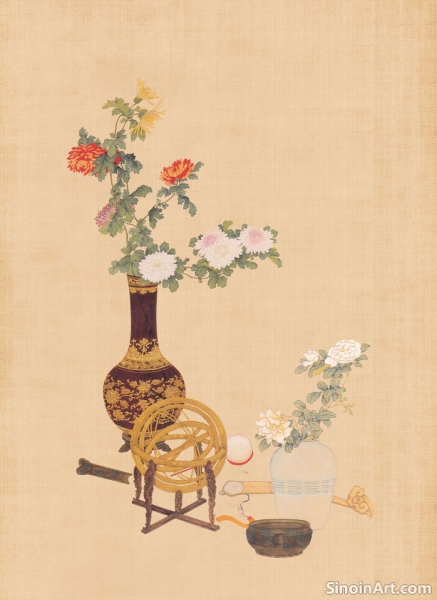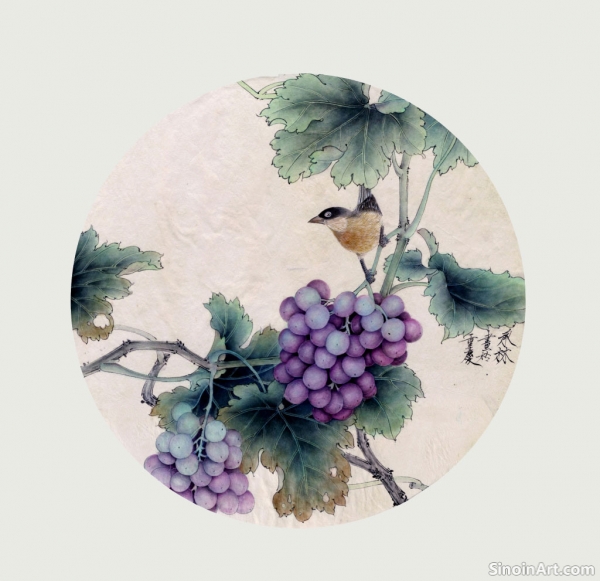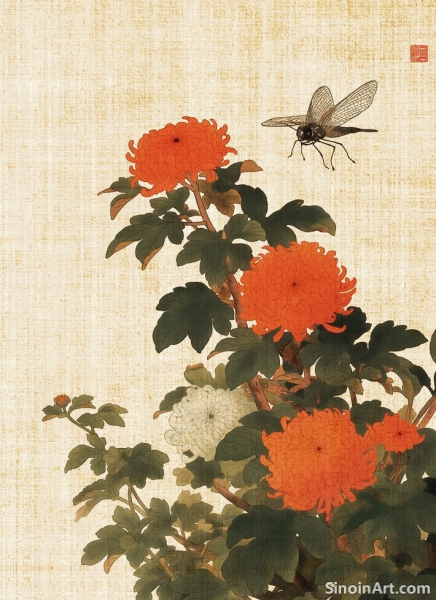Gongbi vs. Xieyi: Understanding the Two Pillars of Chinese Painting
|
Chinese painting is often characterized by two distinct yet complementary styles: Gongbi and Xieyi. While both are deeply rooted in Chinese artistic tradition, they represent contrasting approaches to the representation of the world. Gongbi, meaning meticulous, emphasizes precision and detail, while Xieyi, meaning freehand or sketching the idea, prioritizes spontaneity and expressiveness. Understanding the differences between these two styles is essential for appreciating the full breadth and depth of Chinese painting.  Gongbi painting, as previously discussed, is characterized by its detailed realism and carefully applied layers of color. It requires immense patience and technical skill, with artists often spending countless hours on a single painting. The focus is on accuracy, precision, and the meticulous rendering of each element, be it a flower, a bird, or a human figure. This style often evokes a sense of tranquility and reverence for the subject.  Xieyi painting, on the other hand, is a more expressive and gestural style. It is characterized by bold, sweeping brushstrokes, and a more abstract representation of the subject. The focus is on capturing the essence of the subject, rather than its literal likeness. Artists using the Xieyi method often work with speed and spontaneity, allowing their emotions and intuitions to guide the brush. The results are often more fluid and dynamic than in Gongbi works.  The brushwork in Gongbi painting is characterized by fine lines, often referred to as “iron wire lines,” that are meticulously drawn with a fine-tipped brush. These lines define the forms of the painting with clarity and precision. Xieyi brushwork, in contrast, is more varied, incorporating bold, wet strokes, dry brush techniques, and a range of ink washes. The emphasis is on the expressive potential of the brush, rather than its ability to create realistic outlines. The use of color also differs significantly between the two styles. Gongbi painting often uses a wide range of mineral-based pigments to achieve a sense of realism and depth. Colors are applied in thin, translucent layers, resulting in a luminous quality. Xieyi painting, on the other hand, tends to rely more on ink washes and monochrome or subtle color palettes. The emphasis is on the tonal variations of ink, rather than the use of vibrant hues. In essence, Gongbi and Xieyi represent two different ways of seeing and representing the world. Gongbi is about capturing the intricate beauty and detail of reality, while Xieyi is about expressing the underlying spirit and essence of things. These two distinct styles, together, form the rich tapestry of Chinese painting, each complementing and enriching the other. |
Tag : Gongbi vs Xieyi, Chinese Painting Styles, Meticulous vs Freehand Painting, Chinese Brushwork, Traditional Chinese Art
Related information
- Gongbi Painting and the Depiction of Clouds and Mist
- The Enduring Legacy of Gongbi Painting: Tradition and Innovation
- The Delicate Dance of the Brush: An Introduction to Gongbi
- The Use of Gold Leaf in Gongbi: Adding a Touch of Opulence
- Gongbi Painting and the Art of Storytelling
This article explores the depiction of clouds and mist in Gongbi painting, highlighting the techniques used to create a sense of depth, luminosity, and atmosphere, and how the subtle variations in color and tone evoke a sense of mystery and serenity.
Gongbi painting, rooted in the rich artistic traditions of imperial China, has proven to be an enduring and highly versatile art form, adapting and evolving across generations while maintaining its core principles of precision, detail, and symbolic depth. The long history of Gongbi painting continues to be influential on modern art and the appreciation of traditional techniques.
This article introduces Gongbi painting, a meticulous Chinese art form characterized by its detailed and realistic depictions, outlining its history, techniques, and contemporary relevance.
Discusses the use of gold leaf in Gongbi painting, its application techniques, symbolism, and contribution to the opulence and visual impact of the art.
This article explores the use of Gongbi painting as a medium for storytelling, highlighting the use of detailed scenes, character portrayal, symbolism, settings, and how these elements bring narratives from history, mythology, literature, and everyday life to visual form.